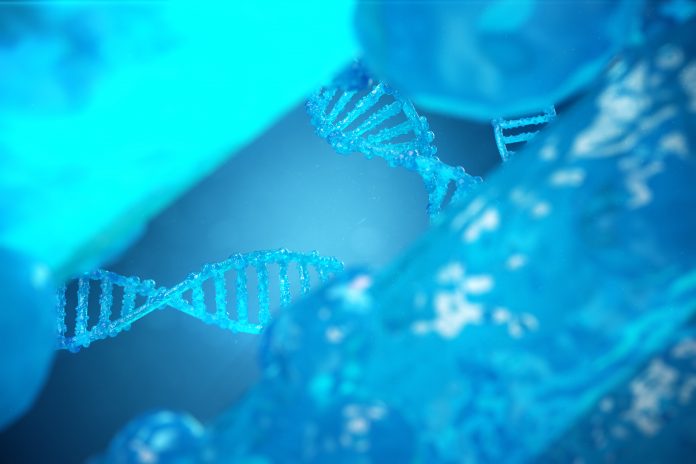Cecilia Van Cauwenberghe from Frost & Sullivan’s TechVision Group, provides an overview of Neurodegenerative Diseases
Neurodegenerative diseases can be defined as multifactorial debilitating disorders of the nervous system. Overall, neurodegenerative diseases affect approximately 30 million individuals worldwide, according to the World Health Organization (WHO).
Neurodegenerative diseases represent one of the main causes of death in the industrialised economy. Overall characterised by a loss of neurons in particular regions of the nervous system, the subsequent decline in cognitive and motor function that patients experience in these diseases is associated with nerve cell loss. The most common denominator among neurodegenerative diseases, in addition to nerve cell loss is inflammation. Although, a series of mutant genes and environmental toxins are related to neurodegenerative disorders, the causal mechanisms remain poorly understood (Van Cauwenberghe, 2019a).
Today, only a few therapies are available with relatively low success. Both, the clinical and the scientific communities are critically devoted to developing new therapeutic approaches to treat and diagnose neurodegenerative diseases.
Factors contributing to neurodegenerative diseases
The factors contributing to the onset of neurodegenerative diseases are multiple. Alzheimer’s disease (AD), Parkinson’s disease (PD), Huntington’s disease (HD), and amyotrophic lateral sclerosis (ALS) diseases are well-established as the consequence of misfolding and dysfunctional trafficking of proteins. However, other factors including mitochondrial dysfunction, oxidative stress, ageing, and environmental issues are deeply associated with the onset of neurodegeneration (Van Cauwenberghe, 2019b).
Although all these factors have been demonstrated to significantly contribute to the etiology of common neurodegenerative diseases, some molecular mechanisms underlying neurodegeneration remain unveiled. Present efforts are focused on the identification of viable drug targets and biomarkers for early diagnosis of the diseases, in order to develop the best-suited therapies.
Ageing population trend
Ageing population comes with the increasing prevalence of neurodegenerative diseases, including but not exclusively, Alzheimer’s disease (AD), Huntington’s disease (HD), and Parkinson’s disease (PD). The severity of these conditions accentuates a need for urgent and effective therapeutic strategies.
Breakthrough therapeutic strategies
Therapeutic strategies must disrupt protein-protein interactions. As the most relevant, subcellular targeting strategies and biomarkers development around the central nervous system (CNS) pathologies are of note.
Protein-protein interactions
Most research and development (R&D) activities emphasise the functional significance of protein-protein interactions in homeostasis and disease pathologies. In fact, many peptides have been proposed as neurotherapeutic agents, due to their capacity to be synthesised by binding specifically to certain native proteins (Bennet et al., 2019).
Proteases vulnerability
One of the most remarkable challenges in the practical application of peptide therapeutics relies on the vulnerability to proteases, which may reduce therapeutic activity and efficacy.
Multifactorial elements triggering neurodegenerative diseases
Abnormal protein dynamics and defective protein degradation and aggregation
Proteins can turn functionally inactive due to partial folding or misfolding, hence becoming the protein toxic to the cell. (Ramos et al., 2019). Dysfunctional aggregations are generated in hydrophobic regions that result exposed by the effect of truncated translational polypeptide products, misfolded intermediates, and unassembled subunits of oligomeric protein complexes.
Oxidative stress and free radical formation
Neural networks are especially sensitive to both oxidative stress and prooxidant/antioxidant homeostasis imbalance in the CNS. As a result, the likelihood of production of several potentially toxic reactive oxygen species (ROS), including both the radical and nonradical species that participate in the initiation and/or propagation of radical chain reactions, is significantly incremented (Afroz et al., 2019).
Impaired bioenergetics and mitochondrial dysfunction
Both mitochondrial dysfunction and oxidative stress are essential causes of the onset of the more common neurodegenerative disorders (Sujatha et al., 2019). Loss of mitochondrial function is strongly associated with an increase in the generation of reactive oxygen intermediates. Dysfunctional mitochondria and/or alterations in mitochondrial dynamics play a leading role in the pathophysiology associated with several neurodegenerative diseases.
Exposure to toxic metals and residual pesticides
Although transition metals are essential components for many biological reactions, alterations in their homeostasis generally lead to an increment in the free radical production. Catalysed by iron, copper, and trace redox-active metals, metal-mediated oxidative stress plays a key role in mitochondrial dysfunction. The increase of iron in the brain is not only associated with neurodegeneration but also to the increased production of free radicals and consequent oxidative stress.
Final remarks
Present treatments for neurodegenerative diseases are palliative in most cases. Major approaches only target a small subset of the population and exhibit poor or null alterations in the disease progression toward permanent disability or death. Most renowned Food and Drug Administration (FDA) approved products are acetylcholine esterase inhibitors, Donepezil (Aricept) and Rivastigmine (Exelon), for AD. Nevertheless, these strategies just serve to alleviate symptoms and slow down the progression of the disease at the beginning of the treatment, but their effect in long-term treatment of the disease is null.
PD is treated with Levodopa in combination with carbidopa (Sinemet). Both substances are capable of penetrating the blood-brain barrier (BBB) to be converted in dopamine after decarboxylation. In this manner, dopamine levels in the substantia nigra are restored. Over time, its efficacy is lost. Anther strategy is focused on dopamine agonists, Pergolide (Permax) and Bromocriptine (Parlodel). However, these therapeutics present severe adverse effects, mostly compromising the endocrine and cardiovascular systems.
Because HD is caused by overactivity in dopaminergic nigrostriatal pathways, its treatment is based on drugs that impair the dopaminergic transmission either by depleting centralmonoamines, Reserpine (Serpadil) or blocking dopamine receptors, phenothiazines (Haldol, Trilafon). ALS is treated with Riluzole (Rilutek, Teglutik), in combination with baclofen or diazepam to control spasticity, an FDA-approved benzothiazole that may slow the progression of the disease, especially by delaying the onset of ventilator-dependence or tracheostomy.
However, results are modestly effective and this drug apparently barely helps to control symptoms. Novel approaches aiming to promote the longevity of affected neurons, not merely slowing down the degeneration process, but also improving the regeneration rates are crucially needed to present real solutions for neurodegenerative disorders.
Acknowledgements
I would like to thank all contributors from the industry involved with the development and delivery of this article from Frost & Sullivan.
References
Afroz, T., Pérez-Berlanga, M. and Polymenidou, M., 2019. Structural Transition, Function and Dysfunction of TDP-43 in Neurodegenerative Diseases. CHIMIA International Journal for Chemistry, 73(6), pp.380-390.
Bennett, C.F., Krainer, A.R. and Cleveland, D.W., 2019. Antisense oligonucleotide therapies for neurodegenerative diseases. Annual review of neuroscience, 42, pp.385-406.
Ramos, S.V., Hughes, M.C., Bellissimo, C.A. and Perry, C.G., 2019. Mitochondrial Dysfunction and Disorganized Microtubules in Duchenne Muscular Dystrophy are Not Related to Altered α Tubulin-Voltage Dependent Anion Channel (VDAC) 2 Interactions. The FASEB Journal, 33(1_supplement), pp.868-27.
Sujatha, J., Yuko, O., Gafken, P .R., Tapscott, S.J. and Bradley, R.K., 2019. Quantitative proteomics reveals key roles for post-transcriptional gene regulation in the molecular pathology of facioscapulohumeral muscular dystrophy. eLife, 8.
Van Cauwenberghe, C. 2019a. Emerging Therapeutics for Neurodegenerative Diseases Part I – Novel Targeted Therapeutic Strategies Technologies Around Neurodegenerative Disorders. Frost & Sullivan’s Research Service, TechVision Analysis, D8BB.
Van Cauwenberghe, C. 2019b. Emerging Therapeutics for Neurodegenerative Diseases Part II – Novel Targeted Therapeutic Strategies Technologies Around Neurodegenerative Disorders. Frost & Sullivan’s Research Service, TechVision Analysis, D8EE.











